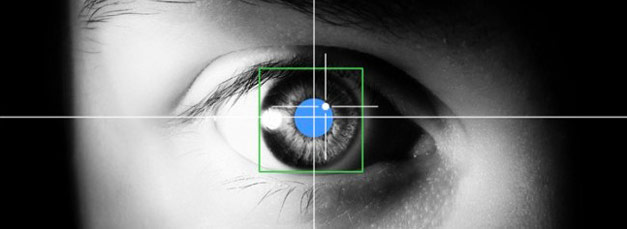
As featured in Citizentekk.
Not very many people have experienced the thrill of controlling a device with their eyes, simply because eye trackers today are very expensive and do not offer any useful applications to the average consumer – this will change very soon!
“You get superpowers,” “it’s like magic” or “it’s a futuristic interface like in the Matrix.” It is almost impossible to explain what eye control feels like if you have not experienced it yourself. Even though eye control is one of the most intuitive and effortless forms of interaction that exist, and we use our eyes every day to examine the world around us without ever thinking about it, the essential understanding of eye tracking technology is one of the biggest challenges that we, as an eye tracking company, face. When presenting our technology to developers, OEMs and investors on a daily basis, we are often met with curiosity and a bit of skepticism as to whether or not our technology actually works and how on earth it should be applied.
A work in progress
Eye tracking is still in its infancy when it comes to user experience and being applied to mass market consumer electronics. It is still very early in the technology lifecycle, and a lot of work has to be done to the user interface and robustness of the technology before it is ready to be implemented into consumer devices.
When you think back 10 years, no one had a smartphone with a touch screen. There were several attempts to market this technology, but it was only when Apple introduced a pre-calibrated system that had sufficient robustness and accuracy, an interface that was suited for touch control, and an app-store where thousands of apps started to appear, that the touch control technology became mainstream. Similar innovations are happening right now with many exciting technologies like virtual reality and gesture control, where functionality, usability and the appropriate applications are being developed simultaneously to bring the technologies to the mass market at the right price point. Eye tracking is about to go through the same evolution.
A shift from concept to reality
Today, eye tracking is mainly used as a means of communication for people with special needs and marketing studies, testing ads and other marketing material. This limitation in usage is due to the cost of an eye tracking system ranging from 10,000 – 30,000 USD.
Affordable eye tracking technology will soon be fully integrated into everyday devices such as smartphones and tablets — for the first time, this technology will be easily available. Many companies are waiting for this to happen, so they can enable eye control for their existing products to increase value and leverage the new possibilities that eye tracking offers.
B2B applications may include:
– Optimized design; being able to know, with certainty, what attracts a users’ attention in ads, on websites, in applications and in grocery stores.
– Improved education; performing nationwide statistics on reading skills in schools.
– Medical diagnostics; detecting Alzheimer’s, ADHD and concussion at an early stage by measuring peoples attention span.
– Hands-free control; assisted typing that allow journalists and software developers to navigate documents with both hands on the keyboard, doctors navigating patients journals in sterile environments, and patients controlling the TV, rolling down the curtain or emailing friends and family when being temporally constrained to a hospital bed.
– Improved visual inspections; ensure that testers actually have looked at the critical areas of the test subject in a factory assembly line.
For consumers use cases may include:
– Automated panning and scroll; scrolling a website, eBook, PDF document and musical note sheet, and panning a map and panoramic image, when looking close to the edge of the document.
– OS navigation; selecting icons, eye driven shortcut menus, controlling media players.
– Intelligent devices; dimming the screen when the user is not present, and focusing the camera on the object the user is looking at.
– Secure devices; Combining hidden eye patterns with retina and face recognition, to create a very secure login for phones, tablets and computers.
– Safer cars; drowsiness detection and hands-free control of head-up displays on the dashboards in cars.
– Gaming; first-person shooters, interactive gameplay changing according to the user’s interest in the game, adjusting the difficulty of the games by placing enemies nearby or far from where the user is looking.
Big data on the fly
When eye tracking is implemented into every new smartphone and tablet on the market, it will be possible to analyze data showing viewing habits, such as where millions of people look at on the web pages they visit. What catches their attention and how long they are spending on each section, and do they see the advertisement that is displayed or not? The possibilities of this analysis can revolutionize markets.
Based on this data, publishers and businesses alike can change the content and the placement of ads on websites in real time and target the content users more accurately. We believe that this could change the online advertising metrics from pay-per-click to pay-per-view-look.
Not if, but when
Eye tracking in itself has a few strong use cases that will benefit certain industries significantly, but when it is combined with other input methods like touch, speech, GPS, gyroscope and gesture, many new products and innovations will see the light of day as eye tracking becomes embedded into our surroundings.
We are at the doorstep of a revolution of how we interact with our surroundings. Devices will become smarter and better aware of our emotions, mental state and interests, and we can provide valuable content based on these parameters. The era of only using mouse and keyboard or touch on a screen is ending. Keeps your eye open for what’s to come.
